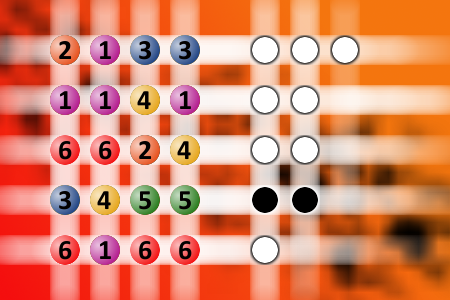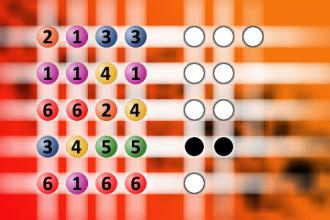Which is a winning combination of digits?
The computer chose a secret code (sequence of 4 digits from 1 to 6). Your goal is to find that code. Black circles indicate the number of hits on the right spot. White circles indicate the number of hits on the wrong spot.Correct answers: 62
The first user who solved this task is Boreli Dejan.
#brainteasers #mastermind

A little girl was out with her...
A little girl was out with her Grandmother when they came across a couple of dogs mating on the sidewalk."What are they doing, Grandma?" asked the little girl.
The grandmother was embarrassed, so she said, "The dog on top has hurt his paw, and the one underneath is carrying him to the doctor."
"They're just like people, aren't they Grandma?" said the little one.
"How do you mean?" asked the Grandma.
"Offer someone a helping hand," said the little girl,"and they screw you every time!"
The grandmother was embarrassed, so she said, "The dog on top has hurt his paw, and the one underneath is carrying him to the doctor."
"They're just like people, aren't they Grandma?" said the little one.
"How do you mean?" asked the Grandma.
"Offer someone a helping hand," said the little girl,"and they screw you every time!"

